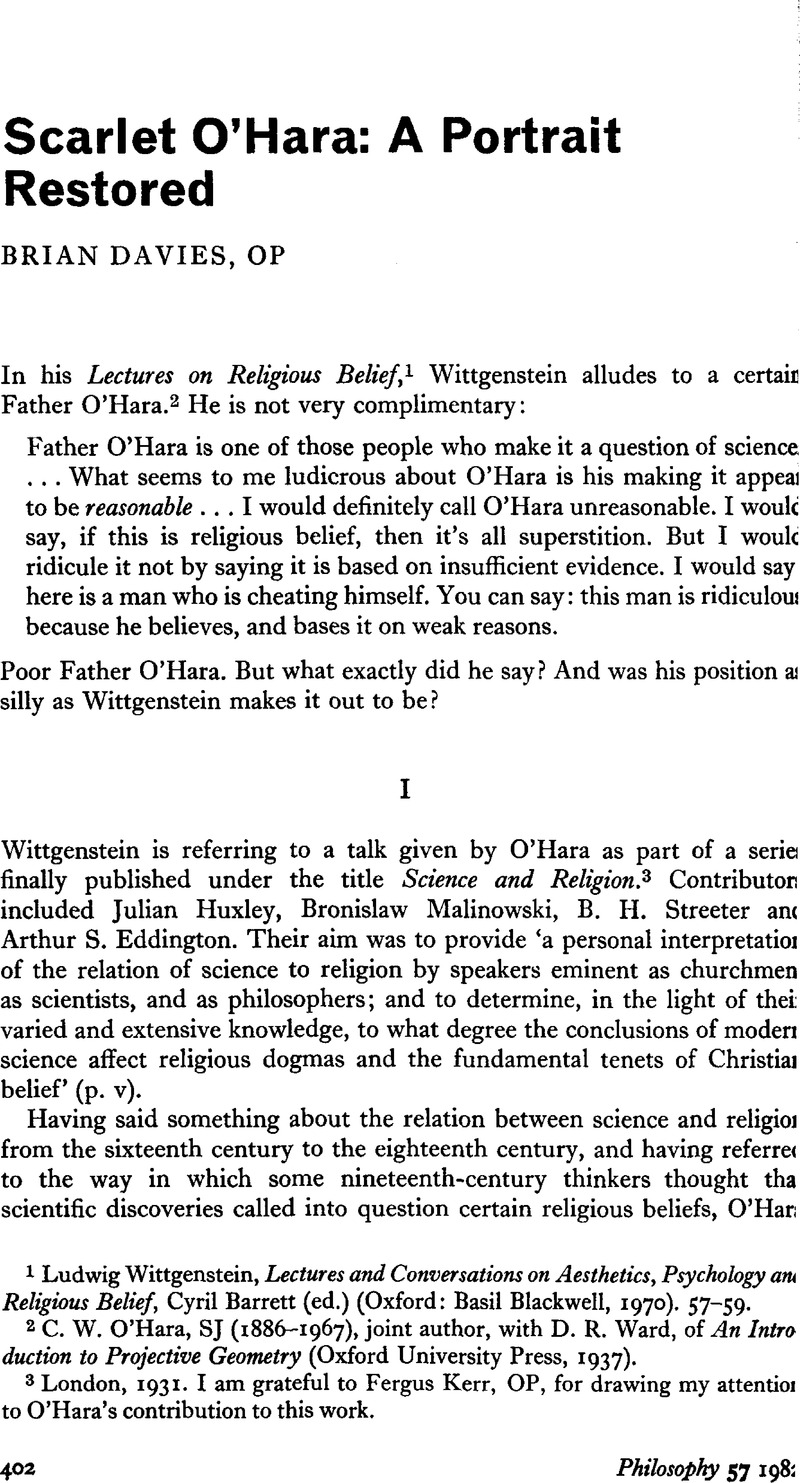Published online by Cambridge University Press: 30 January 2009

1 Ludwig Wittgenstein, Lectures and Conversations on Aesthetics, Psychology am Religious Belief, Cyril Barrett (ed.) (Oxford: Basil Blackwell, 1970). 57?–59.
2 C. W. O'Hara, SJ (1886–1967), joint author, with D. R. Ward, of An Intro duction to Projective Geometry (Oxford University Press, 1937).
3 London, 1931. I am grateful to Fergus Kerr, OP, for drawing my attentioi to O'Hara's contribution to this work.
4 Lectures and Conversations, 57.
5 Ibid.
6 Wittgenstein refers to religion and science later in the Lectures. We read: ‘If you compare it with anything in Science which we call evidence, you can't credit that anyone could soberly argue: “Well, I had this dream … therefore … Last Judgement” ’ (p. 61). If this remark is cited against O'Hara only two points need be made in reply. First, O'Hara never refers to or offers any such argument as that mentioned by Wittgenstein. Second, the argument can hardly be taken as a typical religious argument.
7 Lectures and Conversations, 57.
8 I Corinthians 1:18 and 1:22–24.
9 J. C. A. Gaskin, Hume's Philosophy of Religion (London: Macmillan, 1979), 124. For a similar line of argument in St Augustine see, for example, De Civitate Dei, Book XXII, 5.